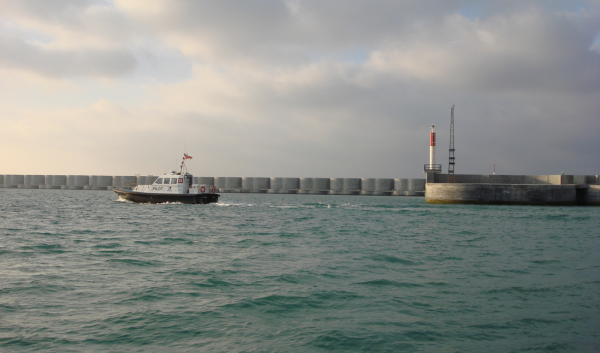


Covering nearly 70% of the Earth's surface, the ocean is the main axis of global trade, with 90% of goods transported by sea. In light of the exponential growth in maritime traffic and intensifying competition between ports, securing navigation has become a critical factor for the sustainable economic development of maritime nations.
In today’s increasingly globalized context, shipping companies favor ports that ensure safe and efficient navigation. Compliant buoyage systems that meet international standards help reduce operational costs and attract more shipping lines. Conversely, insufficient navigational safety leads to higher insurance costs and operational delays.
A port’s attractiveness largely depends on its ability to provide optimal navigation conditions. Port infrastructure that meets international buoyage and maritime signaling standards reduces the risks of accidents and pollution, while also optimizing operational costs. Compliance is a significant argument for shipping companies, especially since insurance companies impose higher premiums on ports deemed unsafe.
The Port of Tanger Med perfectly illustrates the strategic impact of aids to navigation on the competitiveness and logistical performance of a port hub. For over 18 years, Gisman has supported port operations and command through the modernization and maintenance of its buoyage system. By supplying and installing the maritime signaling equipment for Tanger Med I, the Passenger and Ro-Ro Terminal, and Tanger Med II, Gisman has helped transform the port complex into one of the most secure and efficient logistics hubs in the region.
Beyond the installation of aids to navigation, Gisman also provided training for the maintenance teams, ensuring a long-term, self-sufficient service for port authorities. This collaboration has enhanced Tanger Med's attractiveness by offering shipping companies a reliable port environment that aligns with international standards.
Through ongoing modernization of its maritime buoyage system, Tanger Med has become a benchmark in port safety. The optimization of navigational aids has streamlined vessel entry and exit, improved traffic management, and reinforced the port’s reputation among international stakeholders.
Investing in navigation safety is not only a regulatory obligation—it is also a powerful driver for the development of the blue economy. Improved maritime signaling allows for:
With advancements in technology and the integration of smart solutions, modern aids to navigation now offer rapid and measurable return on investment. Ports embracing this approach position themselves as key players in the global maritime logistics network.
Modernizing port infrastructure in terms of maritime signaling is now a strategic lever to ensure safety, efficiency, and port attractiveness. The case of Tanger Med shows how a rigorous approach and technical expertise can optimize navigation and elevate a port’s status on the global stage.
As global maritime traffic continues to grow, innovation and foresight in addressing emerging navigation challenges will be crucial to ensuring the sustainable and competitive development of port infrastructure.
← Back to blog